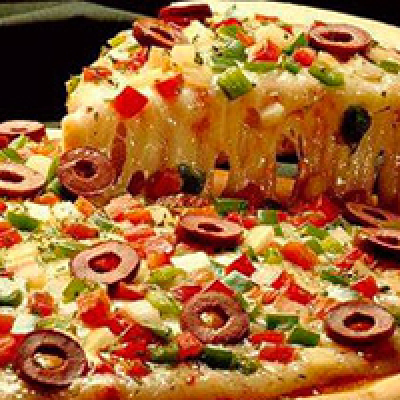The Power of Visual Appeal: the Sight of Food Impacts Taste
 When eating, all of our senses are simultaneously stimulated to create a unique perception of the food. While taste is the primary driver for food acceptance, other sensory cues can bring essential information prior to eating. Scientists at the Nestlé Research Center in Lausanne, Switzerland, have found that simply looking at images of food can influence the subsequent taste perception. The amount of calories in a food is important in determining the motivation to eat and the pleasure that food brings. The energy content of food is not only assessed in the mouth or after consumption, but an estimation of energy content is already established in the brain 200 milliseconds after looking at the food. Since the consequences for taste enjoyment of this automatic process remain unknown, Nestlé researchers used a novel approach, combining electro-gustometry (EGM) and electro-encephalography (EEG), to examine the brain mechanisms underlying visual-gustatory interactions involved in food enjoyment. Healthy adults were shown images of foods with varying caloric content, and a few seconds later an unfamiliar taste was delivered on their tongue using EGM. The participants were then asked to judge the intensity and pleasure of the taste, while their brain activity was measured simultaneously by EEG. Nestlé scientists found that participants reported tastes to be more enjoyable after first looking at images of high-calorie foods, such as pizza or pastry, as compared to looking at images of low-calorie foods, such as watermelon or green beans. This augmented pleasure was mediated by changes in the activity of brain regions implicated not only in food reward valuation but also in taste integration.
When eating, all of our senses are simultaneously stimulated to create a unique perception of the food. While taste is the primary driver for food acceptance, other sensory cues can bring essential information prior to eating. Scientists at the Nestlé Research Center in Lausanne, Switzerland, have found that simply looking at images of food can influence the subsequent taste perception. The amount of calories in a food is important in determining the motivation to eat and the pleasure that food brings. The energy content of food is not only assessed in the mouth or after consumption, but an estimation of energy content is already established in the brain 200 milliseconds after looking at the food. Since the consequences for taste enjoyment of this automatic process remain unknown, Nestlé researchers used a novel approach, combining electro-gustometry (EGM) and electro-encephalography (EEG), to examine the brain mechanisms underlying visual-gustatory interactions involved in food enjoyment. Healthy adults were shown images of foods with varying caloric content, and a few seconds later an unfamiliar taste was delivered on their tongue using EGM. The participants were then asked to judge the intensity and pleasure of the taste, while their brain activity was measured simultaneously by EEG. Nestlé scientists found that participants reported tastes to be more enjoyable after first looking at images of high-calorie foods, such as pizza or pastry, as compared to looking at images of low-calorie foods, such as watermelon or green beans. This augmented pleasure was mediated by changes in the activity of brain regions implicated not only in food reward valuation but also in taste integration.